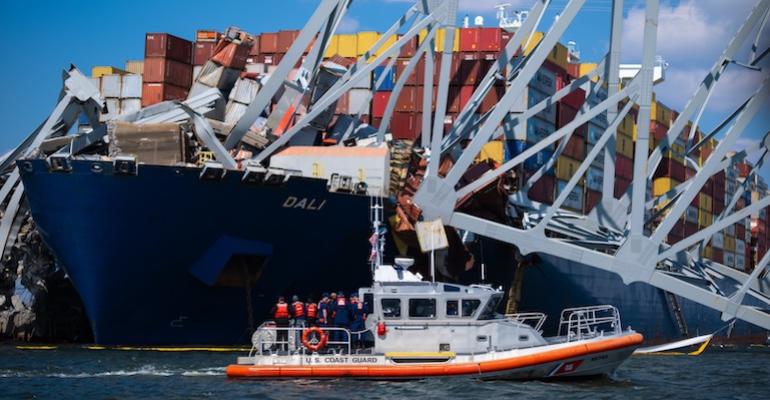There has been no shortage of deep analysis since the grim news of the Baltimore allision broke, with port authorities around the world looking nervously at any bridges for which they might have some responsibility. Mariners among them may recall the rather well-known truism that suggests that - “if you put any obstruction in a shipping channel, sooner or later somebody will bump into it.”
What the disaster in Baltimore should be reminding people of, is the risks to infrastructure which were thought perfectly acceptable half a century ago, but which, over the years, have effectively become time-expired, because of the unforeseen growth in ship sizes.
Ships of 1974 were mere minnows compared to those of today and there is rather more to keeping up with ship size increase than dredging the channel. Quite simply, and this applies to coasters in little ports as much as monsters in giant container terminals, nearly all ships are outgrowing their facilities.
Designers may dispute this, but deep-sea ships are optimised for deep-sea operations and their low-speed manoeuvrability is often questionable. And there can be no argument with the statement that safety envelopes have reduced substantially, driven remorselessly by economic factors and justified by crude risk analyses, based on dubious statistical models. Combine this with the shrinkage in crew sizes, the sophistication of modern systems and the lack of machinery redundancy, based on assumptions of greater reliability which are often flawed.
Then combine all of this with the pressure to deliver on time, to get on and off the berth faster, to load and discharge at a speed optimised to some notional rate, with the ship expected to pick up the slack when the voyage has been delayed or weather has been unkind. The pilot will have the ship’s speed in pilotage waters and time taken to get alongside measured against some optimised figure; the master will be criticised for ordering the number of tugs that prudence and the circumstances demand.
As the wrecked bridge is removed and the ship dragged clear, what might be described as the “bolting the stable door” exercises will get into gear. Look for stricter requirements for tug assistance past any vulnerable structures, and the use of escort tugs secured aft in channels. In short, it will be a return to what was once thought of as sensible precautionary principles, before the accountants got to work.
As for the ships, look for far stricter requirements for the testing of machinery before arrival and departure along with a lot more bureaucracy around the reporting procedures for every sort of mechanical malfunction, no matter how minor it might appear.
Are there any positives to come out of this regrettable incident? There might be a rethinking of safety of navigation in confined waters and an up-to-date assessment of vulnerable infrastructure, in the light of modern ship dimensions. Port authorities, might reserve for themselves the decision-making on the absolute criteria for tug use, taking it out of the hands of the pressurised shipmaster. After all, people who run airports have the authority to tell an aircraft captain whether it is safe to fly, or land.
And hopefully, there will be rather more research into what is causing blackouts and other problems ships are having in port waters. Is it something to do with all the chopping and changing from one fuel to another, to save the planet?
There is no doubt, if one speaks to pilots, that there are more problems of what they like to term power “outages” than there were. Might it be something to do with the complexity of ship systems? Are the engine room teams too small or lacking in experience in emergency operations.
One is not reassured after reading in a Norwegian accident report about the plight of the engineers aboard the cruise ship Viking Sky disabled off the Norwegian coast, with up to 1000 warnings flashing on their screens in the control room. The team aboard Dali managed to get the power back again with commendable speed, but just not quickly enough, it seems.
There is plenty to think about, as the dust settles and the twisted wreckage of the celebrated Baltimore bridge is barged away. But not for me, as after ten years, this is my final column for this excellent website. It has been all pleasure.
Copyright © 2024. All rights reserved. Seatrade, a trading name of Informa Markets (UK) Limited.
Add Seatrade Maritime News to your Google News feed.  |

